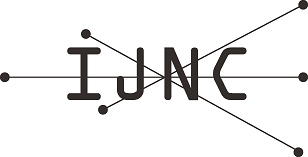Analysis of a method for constructing a cellular automaton from a continuous system
Abstract
A method of constructing a cellular automaton (CA) from numerical solutions of a given partial differential equation (PDE) is considered. It consists of two parts, namely, collecting spatiotemporal data numerically and finding local rules of a CA that appear most frequently. In this paper, we analyze the method mathematically to examine its selectivity and its robustness of the derived local rules so that we can ensure validity of the resultant CA model. In particular, we investigated two limit cases: (a) the number of states of CA goes to infinity and (b) the number of spatiotemporal data goes to infinity. In the former case, we prove that the resultant CA converges to the difference equation where numerical solutions of a PDE are collected. In the latter case, through mathematical analysis, we derive conditions that the resultant CA is uniquely determined when the method of constructing a CA is applied to the diffusion equation. Our study can be a theoretical foundation of empirical CA modeling methods to create a reasonable CA which can somehow reproduce the original behavior of datasets under consideration.
Keywords
Full Text:
PDFRefbacks
- There are currently no refbacks.
